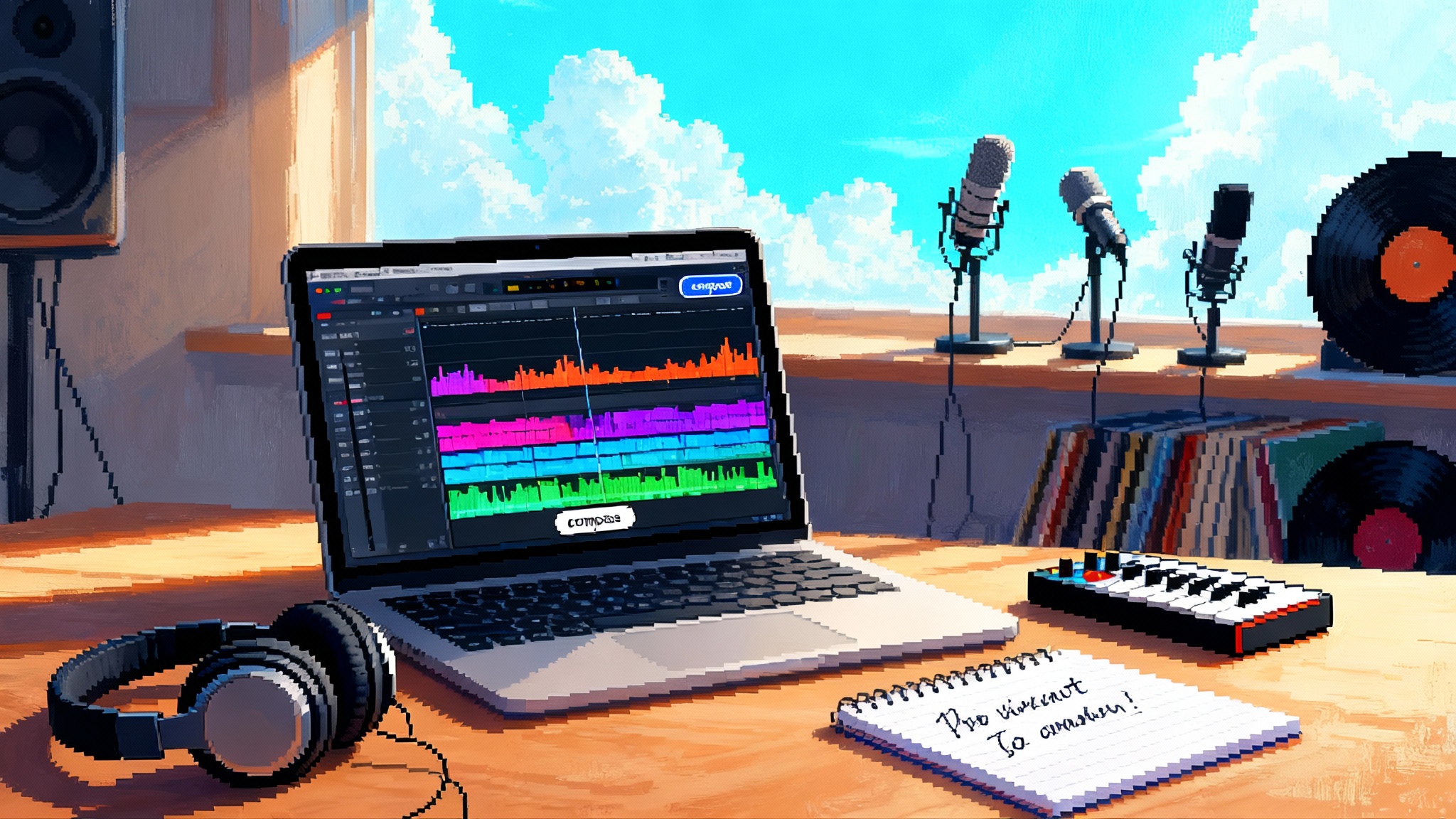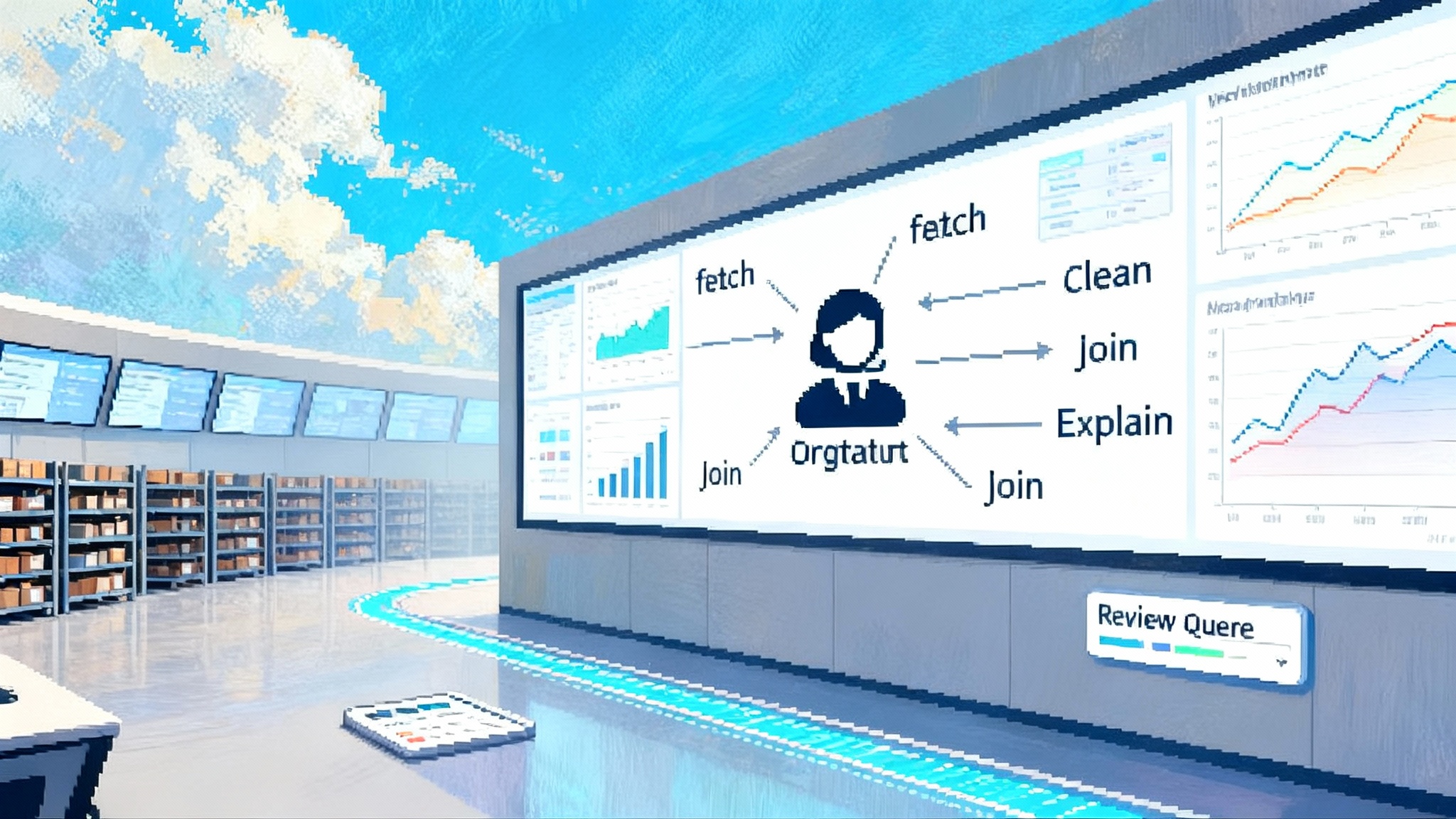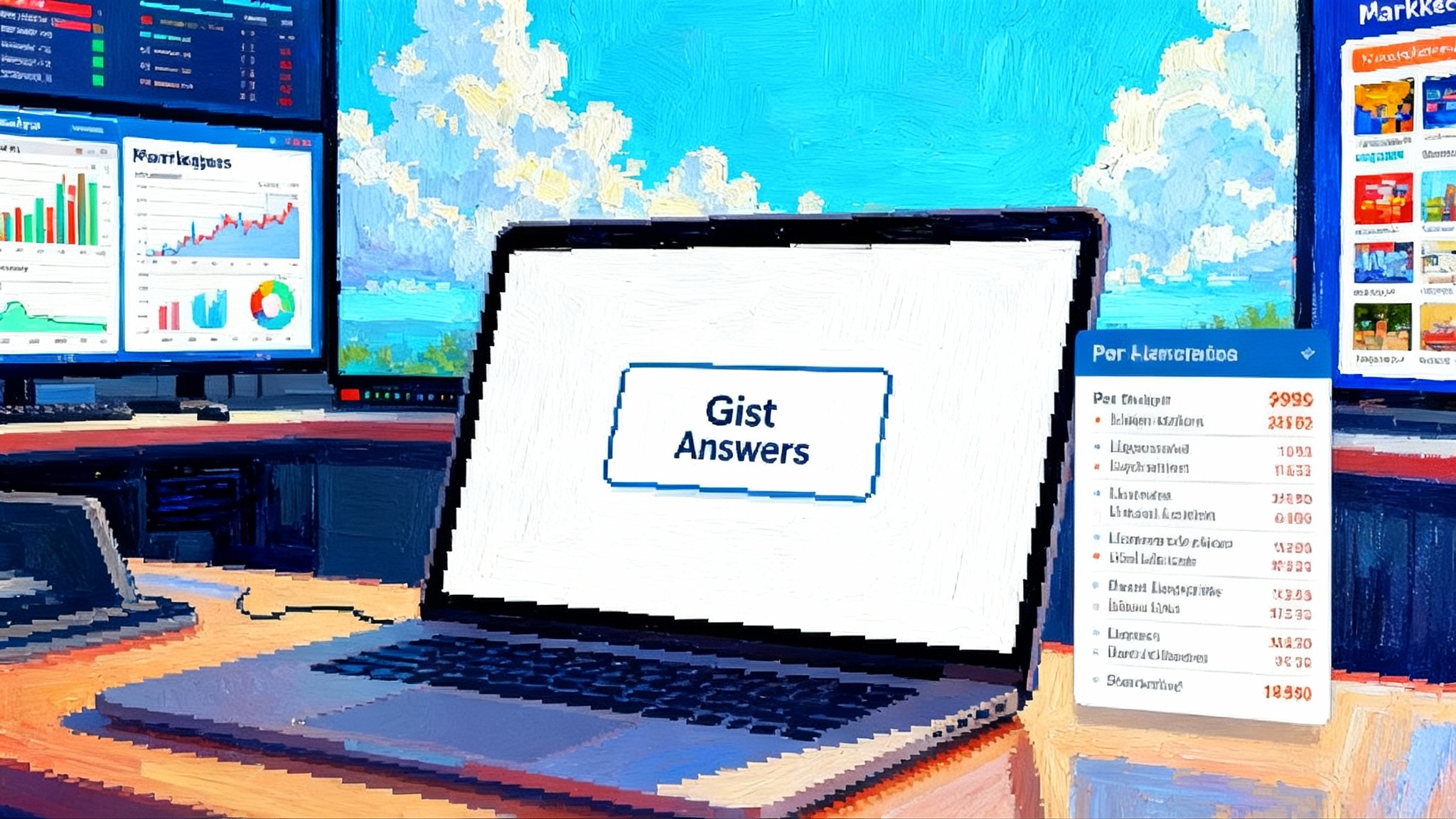ElevenLabs licensed AI music signals a safer new era
ElevenLabs’ Eleven Music launches with opt-in licensing, revenue sharing, and strict prompt rules to de-risk AI audio for creators, agencies, and brands. See how this licensing-first approach fits real production workflows.

From lawsuits to licenses: why this launch matters
AI music has moved fast and broken things. The most visible tools thrilled creators while drawing legal fire. That chaotic phase is giving way to something more pragmatic. On August 5, 2025, ElevenLabs launched Eleven Music, a model for generating studio-grade tracks, and positioned it as usable in commercial contexts out of the box. The announcement paired technical progress with licensing partnerships and explicit safety rules, signaling a shift from move fast to move safely. As one early report put it, see the commercial-use launch details.
In plain terms, this is an attempt to give working creators and brand teams a model they can actually ship with. The goal is not only musical quality. It is a rights and safety posture that reduces friction with legal, procurement, and platform policies so teams can move from experiment to delivery.
The licensing-first playbook
The headline difference is that ElevenLabs did not lead with fair use. It led with deals. The company has said that training data includes works from partners who opted in, with revenue sharing attached. Public reporting highlighted agreements with Kobalt and Merlin, which represent a meaningful slice of independent rights and, importantly, frame participation as opt in rather than scraped by default. That is not the same as locking up the major label catalogs, but it creates a lawful core the company can expand from.
For creators, agencies, and brands, the practical outcome is a tool you can evaluate without immediately hitting a red wall of legal uncertainty. The opt-in structure and revenue sharing are legible to business affairs teams because they map to how publishers and labels already expect to be treated. That matters when an AI vendor transitions from fun demo to line item on your vendor table.
Guardrails that speak the language of risk
Eleven Music is surrounded by rules that brand lawyers will notice. The company bars prompts that include artist names, specific song or album titles, label or publisher names, or substantial chunks of copyrighted lyrics. It also draws bright lines around sensitive verticals like political, religious, adult, tobacco, and weapons-related use. These constraints are not only ethics. They are risk controls that reduce the chance of generating something plausibly linked to an existing artist or entangled in the most reputationally sensitive industries.
Another class of guardrails lives in use restrictions by plan and context. Eleven’s published music terms spell out what paid plans do and do not allow. The short version is that free use is non-commercial, paid tiers allow wide digital use, and distribution for broadcast, high-traffic live events, or large libraries is gated by plan type. If you are building workflows or pitching clients, read the current allowances and carve-outs in the Eleven Music v1 terms.
Put together, the prohibited prompts and usage carve-outs perform an important function. They turn a generative model into a structured product that anticipates how its outputs will meet ad servers, app stores, and studio legal reviews. That is what de-risking looks like in practice.
How this contrasts with Suno and Udio’s legal headwinds
In June 2024, the major labels sued Suno and Udio in U.S. federal courts for alleged mass infringement tied to training on copyrighted recordings. Since then, those cases have evolved with amended complaints and sharper allegations as discovery proceeds. Whether those companies ultimately prevail on a fair-use theory or settle on licenses, the near-term effect is clear. Big brands and conservative agencies will avoid tools that are squarely in the crosshairs of the rights holders who control the catalogs they need.
That reality creates room for an alternative approach. ElevenLabs’ message is simple. If you want to experiment with AI music for client work, the company aims to offer a model trained on materials it has the right to use, with partners who opted in, plus rules and technical filters that reduce copycat risk. That does not end all debate, but it reframes the conversation from can we use this at all to which plan, which use case, and which approvals.
Go-to-market: pricing, permissions, and distribution
Eleven’s pricing and permissions are a key part of the strategy. The free plan is for exploration and internal testing only. Paid tiers unlock broad commercial use with constraints tuned to risk. Highlights to understand before you pitch or deploy:
- Free plan is non-commercial. You can test prompts and explore, but you cannot ship the output in public or monetize it.
- Paid creator and business plans enable commercial use for most digital contexts. Think in-app experiences, YouTube and social, podcasts, prototype trailers, app store assets, and online ads. Offline broadcast, live television and radio, and certain high-visibility activations are generally restricted unless you negotiate enterprise terms.
- Library size and syndication are controlled. There are caps on building large libraries of outputs for re-licensing at scale. That is designed to prevent someone from standing up a competing stock library sourced entirely from a single model.
- Streaming distribution has special treatment. Depending on the plan, uploading generated tracks to DSPs may be limited or prohibited. If distribution to Spotify or Apple Music is core to your plan, confirm the current policy and negotiate coverage in writing.
These choices do three things. They surface risk tiers to buyers. They price in the supervision required for higher-risk contexts. They keep Eleven’s model out of situations most likely to create downstream disputes, such as mass library creation or broadcast placements without bespoke clearances.
Early creator workflows that actually fit the job
With that foundation, what can you use Eleven Music for today without setting off alarms? Several patterns are already clear.
- Social-first ad creative. Small and mid-market brands constantly need variations of 6 to 20 second cues for TikTok, Reels, and YouTube pre-roll. A copywriter can now draft five on-brief tracks from a written creative direction in minutes, then iterate sections for pacing and a buttoned-up sting. When a variation wins, save the prompt and structure for the next brief.
- Trailer shells and animatics. Editors can cut previsualizations with on-genre score elements and placeholder vocals, then hand the exact structure to a composer for final polish. This keeps client feedback focused on story, pacing, and tone rather than on temp tracks that will never be licensable.
- Indie game loops. Solo developers can generate ambient, low-intensity loops that match biome or level mood, then stitch them with transitions created as separate sections. As the build matures, a contractor can replace only the cues that need human nuance.
- Podcast openers and sonic branding. Producers can explore dozens of voice, instrument, and tempo combinations to land on a memorable three to five second mnemonic. Once approved, lock the prompt and structure so every brand asset stays consistent.
- A B testing for performance teams. Growth marketers can spin up multiple musical identities for the same ad concept. Test different tempo, key, and vocal choices against lift and retention metrics, then codify the winner into a reusable recipe.
These workflows do not replace human composers. They change who starts the conversation and when. In each case, the early passes are fast and inexpensive, while the final mile still benefits from a human ear.
Where AI music fits in a verticalized media stack
ElevenLabs was already strong in voice, dubbing, and sound effects. Adding music is less a pivot than a stack completion. A verticalized AI audio stack lets teams do three things in a single vendor relationship.
-
Generate narrative content with voices, accents, and emotions that match the creative brief, then score it and layer foley without leaving the ecosystem.
-
Keep rights management consistent across assets, since the same platform handles provenance signals, safety filters, and usage terms.
-
Move from experimentation to production through a single API, so internal tools can request speech, SFX, and music as separate, composable services.
As teams push toward agentic creation, this consolidation becomes even more valuable. We have already seen how enterprise teams orchestrate multiple tools under one roof in our look at how enterprise agents graduate to production. The same pattern applies to audio. An internal creative agent might draft a script, propose a voice, generate a 12 second bed with a three second sting, and output layered stems for an editor. The point is not total automation. The point is a stack that keeps human control while collapsing time to first idea.
This intersects with broader trends in analytics and content ops. As organizations wire together planning, measurement, and content generation, they increasingly favor systems that can pass context and permissions across services. Our breakdown of agentic BI and tool orchestration shows why a consistent permissions model and audit trail matter. Apply the same logic to audio assets and you get faster approvals, fewer re-dos, and cleaner provenance.
Evaluation checklist for agencies and brands
If you are a marketer, producer, or creative tech lead, use this checklist to cut through the hype and get to a confident yes or no.
- Map the use case to the plan. Before you fall in love with a prompt, confirm whether your deployment context is allowed on your tier. If it touches broadcast, live events, or streaming distribution, expect to need enterprise terms or a custom clearance.
- Draft safe prompts. Avoid any artist or song references, and describe musical qualities instead. Think tempo, instrumentation, mood, harmonic language, and structure. Treat the prompt like a creative brief.
- Keep the paper trail. Save prompts, composition plans, generation timestamps, and plan type with each asset. If anyone asks later, you can show what you generated, when, and under which terms.
- Budget for a human pass. For client-critical work, a composer or music editor should still do a pass for mix, structure, and emotional fit. The model gets you there faster, but a person keeps it on brand.
- Align asset provenance. If your company is adopting content authenticity signals in video and imagery, ask how audio will be marked or watermarked so that the full asset package tells a consistent story.
- Train the team. Share prompt templates, do and do-not lists, and a simple decision tree for plan selection. You will avoid most problems by standardizing the first ten decisions.
Competitive pressure and what comes next
Eleven’s move will force rivals to pick a lane. If you are a music model without licenses, your addressable market will skew toward hobbyists and small creators who accept more risk. If you want enterprise and agency dollars, you will need licensed data, opt-in mechanisms, clear safety filters, and terms that map onto how media is actually bought.
The other unavoidable conversation is remuneration. Publishing and recorded rights have historically been compensated unevenly. Reports around these new deals suggest a push toward parity between compositions and recordings used in training. If that holds, it will set expectations for future negotiations with both publishers and labels. It will also make it easier for industry groups to support AI models that share upside with the catalogs that make them useful.
Distribution rules are the wild card. The more platforms and DSPs demand transparent provenance, the more valuable licensed models become. If major labels come to the table, they will likely ask for deeper filters, more rigorous watermarking, and clear controls for soundalike and impersonation. That could open the door for limited streaming distribution under negotiated conditions, or it could preserve a bright line between generated music for content and music for traditional release.
How it connects to live product demos and sales motions
As audio generation becomes safer for commercial use, it will find its way into real-time demos and sales workflows. We have already covered AI reps inside product demos. Imagine those interactions with on-brand beds and stings tailored to the prospect’s industry. The output is transient, but the brand lift is real, and the licensing posture reduces the risk of surprises in late-stage security reviews.
The bottom line
Eleven Music is not a magic wand. It is a carefully packaged product built for real-world constraints. The creative ceiling will keep rising as models improve and more rights holders opt in. The legal ceiling will keep rising as companies prove that consent and compensation can scale. For the day-to-day work of making content, the headline is already here. You can brief, generate, and ship AI music with fewer legal unknowns, provided you respect the rules, pick the right plan, and keep a human hand on the final cut.
The first AI music land grab was about capabilities. The next phase is about trust. ElevenLabs has made a credible move toward a safer, more usable future, and it just raised the bar for anyone who wants to sell AI audio to professional teams.


